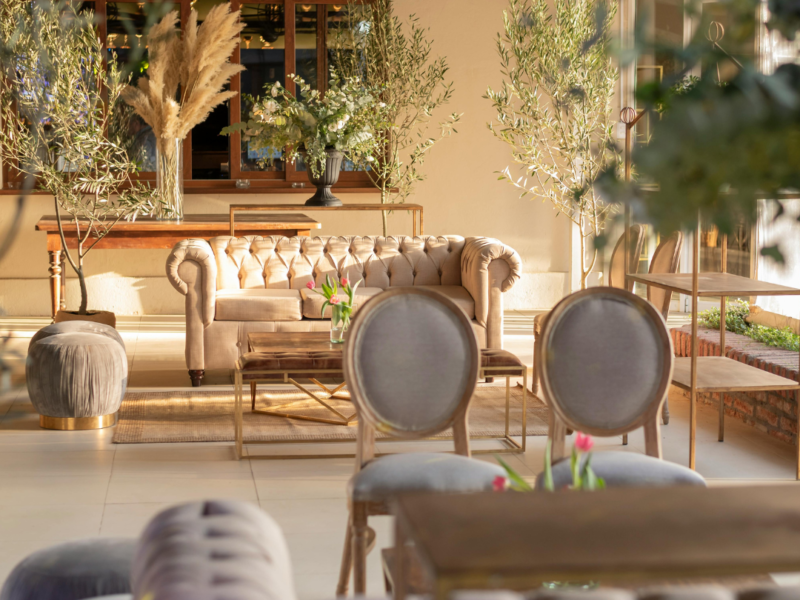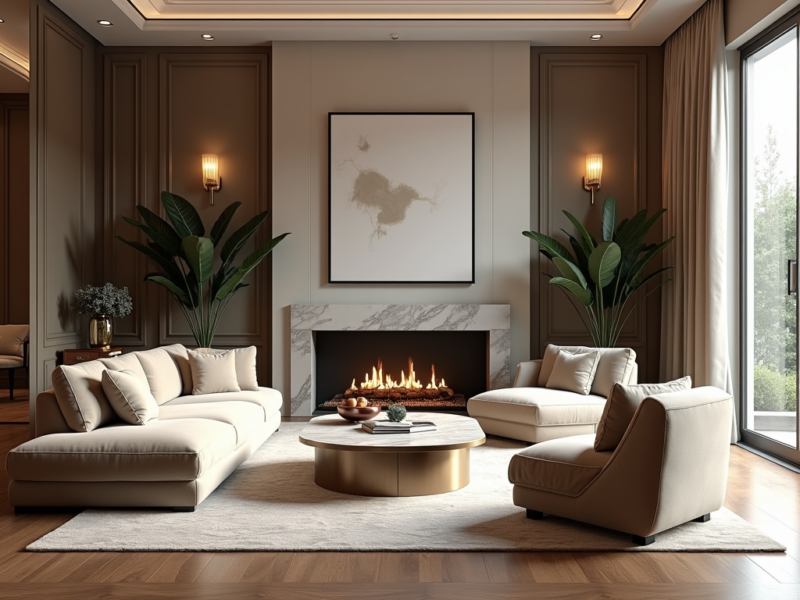Creating a visually appealing space involves more than simply selecting a color scheme or furniture. To add texture and depth to décor, one can incorporate a variety of materials and contrasting elements that enhance the overall aesthetic. This approach not only beautifies a room but also creates a welcoming and engaging atmosphere.
Using textiles, such as throw pillows, rugs, and curtains, can introduce softness and comfort. Mixing different materials, like wood, metal, and glass, adds dimension and visual interest. Furthermore, varying the shapes and sizes of décor items encourages a dynamic arrangement that draws the eye across the space.
Incorporating accessories, like artwork and plants, helps to personalize a room and adds layers. Balancing these elements can lead to a cohesive yet stimulating environment. By understanding how to skillfully mix textures and materials, anyone can elevate their interior design and elevate the feeling of home.
Understanding Texture in Home Decor
Texture plays a crucial role in enhancing home decor. It adds visual interest and depth to spaces, making a room feel more layered and inviting. By incorporating various textures, homeowners can create a dynamic atmosphere that engages the senses.
The Role of Texture
Texture serves as an essential element in design, affecting how a space feels and looks. Different textures can evoke various emotions and atmospheres. For example, soft, plush materials like velvet can create warmth and comfort, while sleek surfaces such as glass or metal contribute to a modern, sophisticated vibe.
Combining textures can create balance. For instance, pairing smooth fabrics with rougher surfaces can add complexity. This contrast helps establish focal points within a room, guiding the eye and enhancing overall aesthetic appeal.
Natural Texture and Its Impact
Natural textures introduce organic elements into decor. Wood texture, stone, and fibers such as linen or cotton can evoke a sense of connection to nature. These materials often bring warmth and authenticity to a space, offering comfort and serenity.
The use of natural textures can also provide visual interest. For example, reclaimed wood furniture adds character and history, while stone accents can create stunning focal points. Incorporating greenery, such as plants, further enhances the natural texture theme, contributing to both beauty and air quality.
Incorporating Textures through Furniture and Accessories
Furniture and accessories are powerful tools for introducing texture into home decor. Textured fabrics on sofas and chairs can create a tactile experience. For instance, a velvet cushion can contrast beautifully against a leather or cotton sofa.
Accessories like throw blankets, rugs, and art pieces play significant roles as well. A woven rug can anchor a room, while metallic elements in gold or silver can add a touch of elegance. Layering these textures ensures each piece stands out while contributing to a cohesive design.
When selecting furniture, consider varying textures to enhance the overall decor. A mix of smooth and rough surfaces draws the eye and encourages exploration, ultimately enriching the living environment.
Creating Depth with Contrast and Patterns
Contrast and patterns are essential tools in design. They can transform a flat space into a dynamic environment, enhancing the visual appeal. Careful use of color and texture creates layers and interest, making the décor more engaging.
Contrast in Colors and Materials
Employing contrasting colors can significantly impact a space. For example, pairing dark hues with light ones draws attention and creates a striking visual depth. Accent walls painted in bold shades can make a room feel more spacious.
Using varied materials also contributes to contrast. Combining smooth fabrics with rough textures, like velvet curtains against a textured wall, adds layers to the decor. He can incorporate framed art that features contrasting colors or materials to emphasize depth and attract the eye.
Using Patterns to Add Depth
Patterns infuse a space with energy and character. Incorporating patterned wallpaper can create a dramatic focal point. For example, geometric designs often draw the eye, making walls seem more dynamic.
In addition, mixing patterns can add intrigue. Using striped and floral fabrics together—like on throw pillows and curtains—can give depth to a seating area. It’s important to maintain a cohesive color palette to tie these patterns together, enhancing overall harmony while still offering visual interest.
Accessorizing for Texture and Depth
Incorporating specific accessories can significantly enhance the texture and depth of a space. Focused choices, such as textured pillows and macrame wall hangings, can add visual interest and comfort.
Textured Pillows and Throws
Textured pillows and throws serve as essential elements for adding depth. Fabrics like velvet, linen, or boucle introduce various tactile experiences.
- Layering: Use a mix of sizes and shapes. A larger pillow in the back with smaller ones in front creates dimension.
- Color Variations: Combine different hues that harmonize with the overall color scheme while also accentuating it.
Throw pillows can be strategically placed on couches, chairs, or beds. Including a cozy throw draped over a furniture piece adds warmth. Consider using patterns or designs that complement existing décor for a cohesive look.
Macrame and Textured Wall Hangings
Macrame and textured wall hangings draw attention and create focal points. They add intricate designs that can contrast with flat surfaces, making rooms feel more inviting.
- Variety of Styles: Choose from boho, modern, or rustic styles depending on the interior theme.
- Placement Options: Hang them above furniture or as part of a gallery wall arrangement.
Incorporating different lengths and thicknesses can create visual interest. For additional texture, mixing in woven pieces or fabric wall hangings enhances the layered effect. Draped curtains can further soften the look while allowing the macrame to stand out.
Choosing the Right Flooring and Wall Paint
Selecting appropriate flooring and wall paint is essential for enhancing the texture and depth of any space. The right choices can significantly impact the overall aesthetic while providing comfort and functionality.
Flooring Options to Enhance Texture
When considering flooring, various materials can alter the visual and tactile feel of a room. Hardwood offers a classic look with natural grain patterns, providing warmth and richness. Different finishes can enhance its texture further.
Carpet adds softness and can introduce color and pattern, contributing to a cozy atmosphere. Textured carpets can also create visual interest.
Tile and laminate options are versatile. They can mimic natural materials while allowing for unique designs. For a more rustic feel, materials like reclaimed wood or natural stone can add unique imperfections that enhance the overall depth.
The Influence of Wall Paint on Texture Perception
Wall paint plays a crucial role in shaping how textures are perceived. Different paint finishes, such as matte, eggshell, or satin, reflect light uniquely and can add depth.
For instance, matte finishes absorb light, making spaces feel cozier, while glossy finishes can highlight textures like stone or plaster.
Color selection is equally significant. Warmer tones tend to create an inviting ambiance, while cooler hues promote a sense of openness. Accent walls with bold colors or textured treatments can provide a focal point, drawing attention to the room’s overall design.
By carefully considering both flooring and paint, an environment can be transformed, inviting warmth and style.



